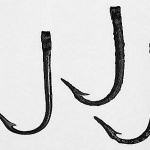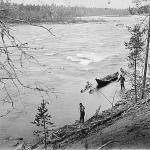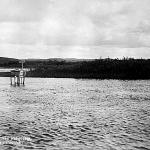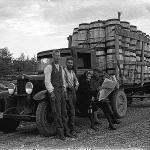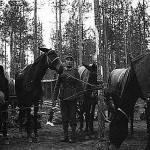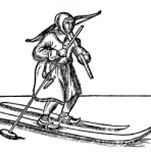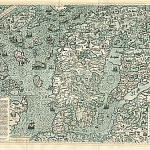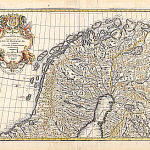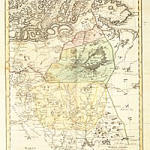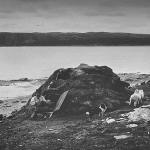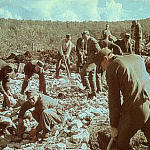

Home
Area
Vätsäri
Övre Pasvik
Pasvik Zapovednik
Nature
Geology
Climate
Water system
Flora
Fauna
Culture
Population
Religion
Sources of livelihood
Old ways of life
Time of industrialism
History
Stone Age
Early Metal Age
Late Metal Age
Middle Ages
Towards modern times
Timeline
Cooperation
Nature monitoring
Nature tourism
Publications
Contacts
Visit Pasvik-Inari
Guidelines
Regulations
News
Links
Timeline
Important years of the border history in the North Calotte region
1200s 1300s 1400s 1500s 1600s 1700s 1800s 1900s
1200s
Mongols occupied the area of Bolgar in the Southern Russia. This caused collapse of trade routes in Bjarmia and immigration towards north.
1264
Kola is mentioned for the first time in the references as a harbour and marketplace.
1277
Swedish king Magnus III Birgersson also known as Magnus Ladulås (Magnus Barnlock) granted the birkarls with a right to tax the Sámi.
1300s
Norway joined the trade union of Hansa.
1302
According to tradition, Vallittu Karjalainen occupied the Kola area up to Varanger fjord, establishing the border between Finland and Norway.
1307
A church and fortress were built to Vardø in Norway.
1313
Norwegian king Håkon V Magnusson (1280-1319) ordered the Sámi of Norwegian fjords to become Christians and to pay taxes.
1323
The peace treaty of Pähkinäsaari between Russia and Sweden divided Finland in two parts.
1326
A peace treaty in Ruija between Norway and Novgorod stopped the forays to the Kola Peninsula. Also the borders and the taxation area of Ruija were confirmed.
1345
Swedish-Finnish Lapland was divided between the bishops of Uppsala and Turku (Åbo).
1349-51
Norway lost a large part of the southern population during the Black Death pandemic of 1349-1351.
1397-1523
Norway united with Denmark and Sweden in the Kalmar Union (1397-1523), which ended when Sweden seceded from the union in 1523.
1400s
1425, 1445 and 1452
Peace Treaties between Sweden and Russia.
1471
Moscow vanquished Novgorod, and on account of this the Lapp villages by Enontekiös Peltojärvi were ordered to pay taxes to Moscow.
1475
According to Axel Magnus there was a monastery in Pechenga erected by Tusan, but it was destroyed soon and it is not mentioned in the medieval documents.
1500s
1517
A new Russian taxation reform for Lapland extended the taxation area of Moscow. The Tsar ordered that tradesmen or monks in Kola Peninsula didn't have the right to force Sámi to drive them with reindeers.
1519
Tsar Vasili Ivanovich sent a letter to the Kola Sámi people and gave them an exclusive right to use Kola coast from the River Paatsjoki (Pasvik) to Umba. Only the people of Inari retained their right to fish in the coastal area of Neiden.
1526
Gustav I, later known as Gustav Vasa, advised monasteries to establish schools for Sámi children.
1527
Reformation of the church began in Sweden-Finland by Gustav Vasa.
1532
Kantalahti was ordered as a basis of Orthodox missionary work for Sámi people.
1537-1814
Norway united with Denmark.
1537-1596
Reformation of the Norwegian church started. Christian III forced introduction of Lutheran Protestantism in Norway.
1547
Ivan IV Vasilyevich, also known as Ivan the Terrible, was the first ruler of Russia to assume the title of tsar, and the state Tsardom of Rus' was established.
1551
Swedish king Gustav Vasa "took Tornio Lapp under his protection". The Tornio Lapp consisted of Lapp villages of Kautokeino, Lappojavri, Avjavarre, Teno, Utsjoki and Inari. So, the taxation of Sweden reached the village of Inari.
1556 - 1589
The most important monastery in Lapland, the monastery of Pechenga, was established by Saint Trifon. The monastery was destroyed in 1589 by the peasants of Ostrobothnia led by Juho Vesainen.
1560s
Dutch tradesmen researched the North-east route and established trade stations at Pechenga, Litsa, Kola and Archangel.
1579
The monastery of Ponoi (Pyenne) was established.
1590 - 1619
A new monastery was established near the city of Kola instead of destroyed Pechenga. It burned already in 1619.
1595
The Peace Treaty of Täyssinä between Sweden-Finland and Russia was signed. This treaty ended also the so called "rappa-wars" or "Twenty-five Years' War".
1596
King Sigismund of Sweden and Tsar Feodor Ivanovitch agreed that the Russian subjects living in the Swedish Kemi Lapp should move to the Russian Lapp.
1600s
1602 and 1607
Charles IX of Sweden took the Kemi-Lapp under "his protection" in 1602, which meant that a new tax authority came to the area instead of Russia. In 1607, he declared himself "King of the Lapps in Nordland" and began "collecting" taxes in Norwegian territory, even south of Tromsø.
1609
With the convention of Viborg between Russia and Sweden, Sweden promised to help Russia in the war against Poland. In return tsar of Russia, Vasili Shuiski promised to assign Käkisalmi and Lapland to Sweden.
1610
Poland defeated the Russian-Swedish army. The acceded tsar, Mikael Romanov, cancelled all assignments of the areas to Sweden.
1611-13
Kalmar War started between Denmark and Sweden. In peace treaty of Knäred Denmark reached victory by restoring Norwegian control of Sweden's land route through Lapland by incorporating Lapland into Norway.
1617
In the Stolbova Peace Treaty, Russia transferred the County of Käkisalmi, Inkerinmaa and Lapp villages to Sweden.
1618-1648
The Thirty Years' War was a large conflict in early modern European history. Denmark-Norway actively participated in the Thirty Year War between 1625 and 1630.
1619 - 1764
A new monastery called New Pechenga was established in the city of Kola. Because of the greediness and indolence of the monks, Peter the Great abolished the properties of the monastery and ordered the return of their possessions to Skolt Sámi in 1697. Catherine II closed the monastery in 1764 as a result of monks´ profligacy.
1621
The eastern border of Sweden-Finland and Russia was defined, and this border was valid until the year 1940. Only in 1920 was Pechanga (Petsamo) added to Finland.
1646
The first church of Inari was erected near the place where the old village of Inari was situated, in Pielpajärvi.
1700s
1700-1721
The Great Northern War was fought between a coalition of Russia, Denmark-Norway, and Saxony on one side and Sweden, which was helped by the Ottoman Empire on the other. The war ended with the Treaty of Nystad and the Stockholm treaties, leaving Russia dominant in the Baltic Sea and a major player in European politics. Peter the Great transformed the Tsardom of Russia into the Russian Empire.
1751
In the Strömstad Treaty, the border between Denmark-Norway and Sweden-Finland was finally established. Denmark-Norway took over Kautokeino, Karasjok and Utsjoki on the north side of the Tana River (Polmak). Sweden-Finland lost its fishing and trading places on the Arctic Sea coast. The Lapp Codicil was part of the border treaty and was intended to secure the rights of reindeer-herding Sámi to move across the national borders.
1800s
1809
In the Hamina Treaty, Sweden-Finland was forced to surrender Finland to the Russian Tsar. Finland became a separate Grand Duchy in Russia. Neiden, the River Paatsjoki (Pasvik) and Petsamo were defined as joint areas of Russia and Sweden.
1814
Norway separated from Denmark and entered into union with Sweden. Norway got its own constitution on 17th of May in Eidsvoll. Area of Sør-Varanger was a communal district of Norway and Russia.
1826
Sweden-Norway and Russia divided the last joint taxation areas. Lake Inari was defined as Finnish, and Sør-Varanger became part of Sweden-Norway. The new border cut through the old Skolt Sámi siida areas, and the inhabitants had to choose which nationality and place of residence they wanted to have.
1830-40
Sweden-Norway and Russia negotiated about the fishing and herding rights of the Sámi.
1850s
Immigration of Finns to the Pechenga area begins.
1852
The Norwegian-Finnish border was closed for the movement of reindeer. This had consequences for reindeer-herding Sámi, as new grazing lands had to be found. It was, however, difficult for the authorities to enforce the agreement along the border.
1855
England and France guaranteed immunity of the Ruija area because they were anxious about the expansion of Russia to the area.
1900s
1905
The union with Sweden and Norway was peacefully dissolved, and Sweden recognised Norwegian independence. The parliament offered the throne to Prince Carl of Denmark, who confirmed the monarchy of Norway and ascended the throne under the Norwegian name Haakon VII.
1915-16
Cotton-wool was traded from Kirkenes to Ivalo, first along the River Paatsjoki (Pasvik) and then on the Finnish side along the so called "Pumpulitie" (Cotton-wool road).
1916
Building of the Arctic Sea Road began.
1917
Finland became an independent state. The October Revolution (also known as the Bolshevik Revolution) overthrew the tsarist autocracy and resulted finally in the establishment of Soviet power under the control of the Bolshevik party.
1918
The Finnish Civil War was fought in Finland from January 27 to May 15, 1918, between the Social Democrats led by the People's Deputation of Finland, called the "Reds", and the non-socialist, conservative-led Senate, called the "Whites". The Whites won the Civil War.
1920
Finland and the Soviet Union signed a peace treaty in Dorpat. Finland received the Pechenga area west of Korvatunturi to the Arctic Sea. Russia was now no longer a neighbour of Norway.
1922
The Soviet Union was established in 1922.
1939-40
The Winter War between Finland and the Soviet Union started. The Moscow Peace Treaty was signed by Finland and the Soviet Union in 1940. It ended the 100-day Winter War. The treaty ceded parts of Finland to the Soviet Union. However, it preserved Finland's independence.
1940
As World War II begins, Norway was occupied by Germans.
1941-44
Continuation War between Finland and Soviet Union started. Finland cooperated closely with Germans, and in 1943-44 the Germans improved the roads in northern Norway and Finland. The Moscow Armistice was signed by Finland and the Soviet Union in 1944, ending the Continuation War. Finland had to cede parts of Karelia and Salla, and to hand all of Petsamo to the Soviet Union. Norway acquired the Soviet Union as its neighbour in the east. Movement across the border was strictly limited. Sør-Varanger was liberated by the Red Army as the first area to be liberated in Norway.
1944-45
War of Lapland started when Finns sought to comply with the Soviet demand that all German troops be expelled from Finland. Finns struck first in the Kemi-Tornio area, and drove the Germans towards northern Finland. Most of the civilian population of Lapland, a total of 168 000 persons, was evacuated to Sweden and Southern Finland. Germans conducted severe scorched earth warfare, burning most buildings in Lapland. Last German solders were expelled from Finland in 1945.
1991
The Soviet Union dissolved, and the Republic of Russia was established..
